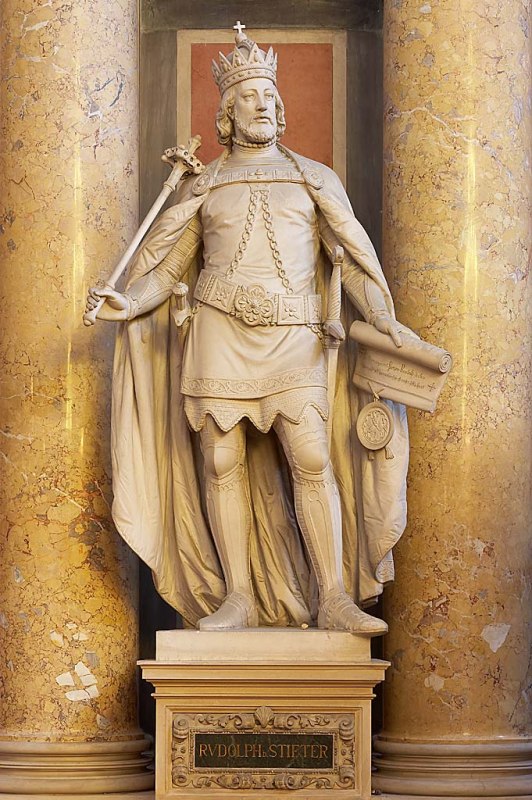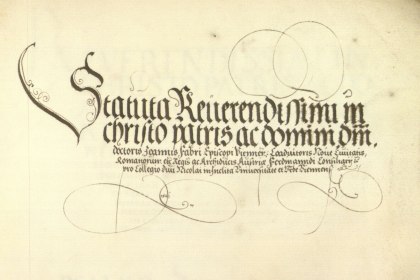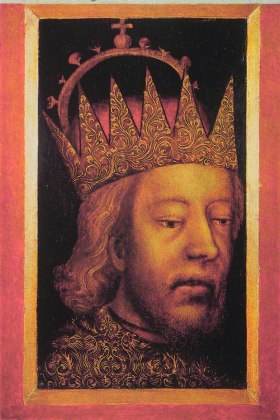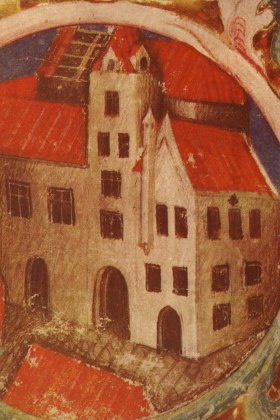University foundations
In the Middle Ages and the early Modern Age income from foundations was an important source of capital for the university system. Teachers’ wages were paid, or at least augmented, with money from foundations, and scholarships and accommodations for students were provided. As long as the state did not allocate a university budget, the whole of the study system was dependent on these funds.
Habsburg Landesfürsten (local sovereigns) as well as private persons acted as benefactors, contributing funds or realty to the foundation. They defined the objectives of their foundations, making them serve not only charitable causes, but also the memory or salvation of the donors. Many of these foundations were administrated by the university or one of its faculties.
Together with the All Saints’ chapter of St. Stephen’s cathedral which he had donated at the same time, the foundation was meant to serve the Duke’s salvation of his soul. However, Rudolf neglected to provide an adequate financial basis for the universitas magistrorum et scholarium (community of teachers and students). Although he allocated income from the Landesfürst’s parish at Laa an der Thaya to the university, it was not enough. His project of a separate university quarter (“Pfaffenstadt”, “priest city”) forever remained an idea.
Rudolf’s brother, Albert III, who had already contributed to the university’s establishment in 1365, confirmed and renewed the Viennese university in 1384 and founded a magisters’ college, allotting it income and its own buildings. The Duke’s College (collegium ducale) which emerged from this, secured his college members – who were also entitled to a spot in the cathedral chapter – a regular income and gave the university its first own building in the Stubenviertel. Until it was handed over to the Jesuits in 1623, it was the university’s teaching and administration center. Albert III also donated other buildings for the formation of the collegium iuristarum (jurist school in Schulerstraße, 1384) and the St. Nicholas College for theologians (Singerstraße, 1385).
Salvation, commemoration of the dead and the general good
Apart from charitable causes, an important motif of foundations in the Middle Ages, also of those for universities, was providing for one’s own salvation in the afterlife. A foundation’s beneficiaries were obliged to serve the benefactor’s memoria mainly through prayer. This also applied to students who received accommodations in bursae founded with this in mind. If the beneficiaries were poor people or people in need, the value of this pious deed was increased. From the end of the 15th and beginning of the 16th century, the thought of the afterlife retreated as a motivation for foundations. The charitable foundations were then sometimes meant to support the studies of the benefactor’s family members or of people from their home regions.
Between 1365 and 1700 32 private scholarship foundations were established at the University of Vienna. But also after this time it was common to promote one’s own memory through scholarships. At the start of the 20th century more than 130 foundations were managed by the University of Vienna. Unfortunately however, much of the foundation funds fell victim to the hyperinflation of the 1920s. Due to the loss of capital, in 1926 most of them were consolidated into one scholarship fund.
Nationalization of the university’s foundation assets
As early as the 16th century the state took recourse to parts of the university’s assets from foundations. This was justified with the increasing negligence in the scholarship and foundation system. The administration of the university’s finances was handed over to the royal superintendent. Since Ferdinand I’s Reformatio Nova in 1554 the professors’ wages were exclusively paid from the Landesfürst’s coffers. Money the university received from legacies or by selling real estate had to be given as loans to the local sovereign’s treasury. The university was supposed to meet expenses solely from the 10% interest rate. This led to problems, since the sovereign’s administration had a low payment morale. Until the middle of the 18th century, the university accrued over half a million guilders in outstanding claims to the state. The state solved this problem in 1754 by simply nationalizing the entire wealth of the university. All borrowers’ notes were handed over to the government. Thus, all relations under private law between the university and the state ended and in their place stepped a financial relationship subject to public law.
At least the university had received a new building from Maria Theresia in 1755 – the so-called New Aula, today the seat of the Austrian Academy of Sciences. However, in 1784, Emperor Joseph II brought it under control of the state’s financial administration, together with other real estate the university had partly gotten from foundations. With this, all of the university’s financial assets had been passed on to the state.
Zuletzt aktualisiert am 15.04.2024 - 08:30
-
Das Collegium trilingue
16. Jhdt.–16. Jhdt. -
Das Herzogskolleg („Collegium ducale“)
1384
-
Rudolf IV. (Habsburg), Herzog von Österreich, Beiname „der Stifter“
1.11.1339–27.7.1365 -
Albrecht III. (Habsburg), Herzog von Österreich
1349–29.8.1395 -
Maria Theresia von Österreich (Habsburg)
13.5.1717–29.11.1780 -
Joseph II. von Österreich (Habsburg-Lothringen)
13.3.1741–20.2.1790









